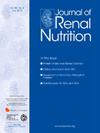补充镁可增加低镁尿症结石患者尿液中的镁和柠檬酸盐含量。
IF 3.2
3区 医学
Q2 NUTRITION & DIETETICS
引用次数: 0
摘要
目的比较单纯食物补镁或镁补充剂对尿镁患者尿镁和枸橼酸盐排泄的影响:我们回顾了结石预防实践中被建议开始服用镁补充剂(Sup)(250-500 毫克/天)或增加膳食镁摄入量的患者的病历。我们纳入了 24 小时尿镁结果的成年人:无Sup组(n=74)和Sup组(n=56)]在年龄、性别、结石病史、吸收不良或其他临床指标方面没有差异。所有患者的 UMg 都有所升高(No Sup 和 Sup 的升高幅度分别为 53 至 69 毫克/天和 47 至 87 毫克/天);但 Sup 组的升高幅度明显更高。此外,88% 的 Sup 患者 UMg 达到≥70 毫克/天,而 No Sup 组中只有 58% 的患者达到了这一水平。组内尿柠檬酸盐的增加仅在 Sup 组有显著意义:结论:在尿镁低的患者中,从食物中摄取更多的镁和补充镁都能显著提高尿镁。然而,补充镁剂的患者更有可能达到或超过镁70毫克/天,并获得更高的平均镁含量。尿液中柠檬酸盐的变化只有在 Sup 组中才有意义。本文章由计算机程序翻译,如有差异,请以英文原文为准。
Magnesium Supplementation Increases Urine Magnesium and Citrate in Stone Formers With Hypomagnesuria
Objectives
To compare the effects of magnesium repletion by a foods-alone approach or by magnesium supplementation on urinary magnesium and citrate excretion in patients with urine magnesium <70 mg/day.
Methods
We reviewed medical records of patients in our stone prevention practice who were advised to start a magnesium supplement (Sup), 250-500 mg/day, or increase dietary magnesium consumption. We included adults with 24-hour urine magnesium (UMg) <70 mg, those who received magnesium recommendations (corroborated by the dietitian’s clinical notes), and those with a follow-up 24-hour urine collection ≤18 months. Urine results were assessed by group.
Results
Groups [No Sup (n = 74) and Sup (n = 56)] were not different for age, gender, stone history, malabsorption, or other clinical indices. All patients raised UMg (53-69 and 47-87 mg/day for No Sup and Sup, respectively); however, the increase was significantly higher in the Sup group. Moreover, while 88% of Sup patients achieved UMg ≥70 mg/day, only 58% in the No Sup group did so. Within-group increases in urine citrate were significant only in the Sup group.
Conclusion
Among patients with low UMg, both higher consumption from foods and magnesium supplementation significantly increased UMg. However, those who supplemented were significantly more likely to reach or exceed UMg 70 mg/day and achieved higher mean UMg. The change in urine citrate was significant only among those in the Sup group.
求助全文
通过发布文献求助,成功后即可免费获取论文全文。
去求助
来源期刊

Journal of Renal Nutrition
医学-泌尿学与肾脏学
CiteScore
5.70
自引率
12.50%
发文量
146
审稿时长
6.7 weeks
期刊介绍:
The Journal of Renal Nutrition is devoted exclusively to renal nutrition science and renal dietetics. Its content is appropriate for nutritionists, physicians and researchers working in nephrology. Each issue contains a state-of-the-art review, original research, articles on the clinical management and education of patients, a current literature review, and nutritional analysis of food products that have clinical relevance.
 求助内容:
求助内容: 应助结果提醒方式:
应助结果提醒方式:


